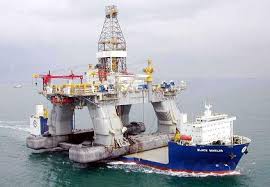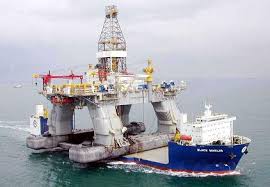
As producers move to scale down these mega-operations, the U.S. shale boom shaking the oil industry is changing the way deep-water oil exploration projects are carried out.
"It's not so much innovation, it's more a change in mind-set," said Wood Mackenzie's upstream oil and gas research director, Angus Rodger.
He said that by making them smaller and producing fewer barrels while trying to remain profitable, producers are reducing the cost of their deep-water projects.
Potentially giving shale oil a run for its money and with breakeven likely moving below $50 per barrel of oil equivalent, projects in the Gulf of Mexico are leading the way.
As OPEC and non-OPEC producers work to curb output by almost 1.8 million barrels per day (bpd) in the first half of this year,, shale oil is competitive in the current price environment around $50 a barrel.
The break-even price for U.S. shale oil producers was pegged to an average $35 per barrel in a report from consultancy Rystad Energy issued in February.
"Over time, we see much more of a leveling of the playing field than we've seen in the last few years," Rodger said.
He expects a total of eight projects overall in 2017 — the same as combined total for 2015 and 2016, Rodger says, with three big deep-water projects approved so far this year.
"The majors are showing signs they are looking at this resource class again," he said, citing examples of BP's M&A transactions in Egypt and Senegal, and Statoil and Total's deals in Brazil.
Rodger said that as medium-size players have all but gotten out of the space to put their money into lower cost shale instead, the market can expect large companies to dominate deep-water exploration because of the long project timeline and large investment capital involved
"Deep-water remains a big boys' game, it's not for everyone," said Rodger.
Oil prices have come off this year with U.S. West Texas Intermediate dropping to around $48 a barrel, while Brent crude oil dipped to around just above $50 a barrel in the last week even though they rose as much as 20 percent solidly above $50 a barrel when the deal was struck in November of last year to curb output.
Wood Mackenzie says that deepwater drilling is back to challenge shale.
However for now, prices appear to be supported. With WTI crude moving around $49.50 a barrel while Brent crude was moving around $52.30 a barrel, crude oil prices were flat to slightly lower on Thursday morning in Asia.
After the Department of Energy said U.S. crude inventories rose 867,000 barrels in the week ending March 24, overnight crude oil futures were rose more than 2 percent.
"What we're seeing at the moment is the building of a base," said ClipperData's commodity research director, Matt Smith.
Smith added that this is a seasonal trend that is likely to level off in April although U.S. crude inventories have risen by 55 million barrels so far this year.
(Source:www.cnbc.com)
"It's not so much innovation, it's more a change in mind-set," said Wood Mackenzie's upstream oil and gas research director, Angus Rodger.
He said that by making them smaller and producing fewer barrels while trying to remain profitable, producers are reducing the cost of their deep-water projects.
Potentially giving shale oil a run for its money and with breakeven likely moving below $50 per barrel of oil equivalent, projects in the Gulf of Mexico are leading the way.
As OPEC and non-OPEC producers work to curb output by almost 1.8 million barrels per day (bpd) in the first half of this year,, shale oil is competitive in the current price environment around $50 a barrel.
The break-even price for U.S. shale oil producers was pegged to an average $35 per barrel in a report from consultancy Rystad Energy issued in February.
"Over time, we see much more of a leveling of the playing field than we've seen in the last few years," Rodger said.
He expects a total of eight projects overall in 2017 — the same as combined total for 2015 and 2016, Rodger says, with three big deep-water projects approved so far this year.
"The majors are showing signs they are looking at this resource class again," he said, citing examples of BP's M&A transactions in Egypt and Senegal, and Statoil and Total's deals in Brazil.
Rodger said that as medium-size players have all but gotten out of the space to put their money into lower cost shale instead, the market can expect large companies to dominate deep-water exploration because of the long project timeline and large investment capital involved
"Deep-water remains a big boys' game, it's not for everyone," said Rodger.
Oil prices have come off this year with U.S. West Texas Intermediate dropping to around $48 a barrel, while Brent crude oil dipped to around just above $50 a barrel in the last week even though they rose as much as 20 percent solidly above $50 a barrel when the deal was struck in November of last year to curb output.
Wood Mackenzie says that deepwater drilling is back to challenge shale.
However for now, prices appear to be supported. With WTI crude moving around $49.50 a barrel while Brent crude was moving around $52.30 a barrel, crude oil prices were flat to slightly lower on Thursday morning in Asia.
After the Department of Energy said U.S. crude inventories rose 867,000 barrels in the week ending March 24, overnight crude oil futures were rose more than 2 percent.
"What we're seeing at the moment is the building of a base," said ClipperData's commodity research director, Matt Smith.
Smith added that this is a seasonal trend that is likely to level off in April although U.S. crude inventories have risen by 55 million barrels so far this year.
(Source:www.cnbc.com)





